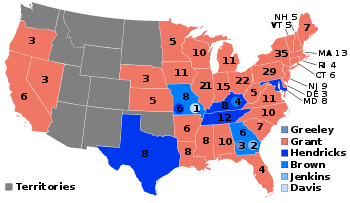United States presidential election, 1872
| | |||||||||||||||||||||||||||||||||||||||||||
| |||||||||||||||||||||||||||||||||||||||||||
| |||||||||||||||||||||||||||||||||||||||||||
|
| |||||||||||||||||||||||||||||||||||||||||||
| Presidential election results map. Red denotes states won by Grant/Wilson, blue denotes those won by Greeley, the various shades of yellow and orange denote those won by Hendricks, Brown, Jenkins, and Davis; this reflects the posthumous scattering of Greeley's electoral votes. Green denotes states that were ineligible to vote. Numbers indicate the number of electoral votes allotted to each state. | |||||||||||||||||||||||||||||||||||||||||||
| |||||||||||||||||||||||||||||||||||||||||||
The United States presidential election of 1872 was the 22nd quadrennial presidential election, held on Tuesday, November 5, 1872. The incumbent President Ulysses S. Grant was easily elected to a second term in office, with Senator Henry Wilson of Massachusetts as his running mate. Grant's decisive re-election was achieved in the face of a split within the Republican Party that resulted in a third party of Liberal Republicans nominating Horace Greeley to oppose Grant. This action caused the Democratic Party to cancel its convention, support Greeley as well, and not nominate a candidate of its own.
On November 29, 1872, after the popular vote was counted, but before the Electoral College cast its votes, Greeley died. As a result, electors previously committed to Greeley voted for four different candidates for president and eight different candidates for vice-president. Greeley himself received three posthumous electoral votes, but these votes were disallowed by Congress. The election of 1872 is the only United States presidential election in which a major party nominee died during the electoral process.
Nominations
Republican Party nomination
-
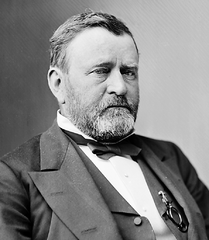
President Ulysses S. Grant
For President -
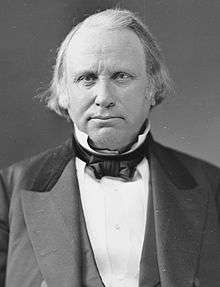
Senator Henry Wilson from Massachusetts
For Vice President
At the 1872 Republican National Convention the Republicans nominated President Ulysses S. Grant for re-election, but nominated Senator Henry Wilson from Massachusetts for vice-president instead of the incumbent Schuyler Colfax, who was implicated in the Credit Mobilier scandal. Others, who had grown weary of the corruption of the Grant administration, bolted to form the Liberal Republican Party.
The opposition fusion nominations

In the hope of defeating Grant, the Democratic party endorsed the nominees of the Liberal Republican Party.
-
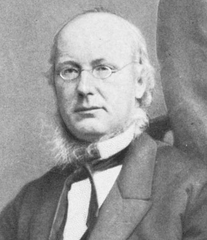
Newspaper publisher Horace Greeley
from New York
For President -
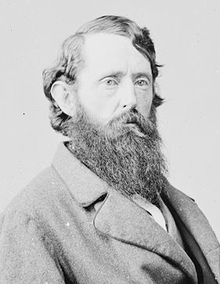
Governor Benjamin Gratz Brown of Missouri
For Vice President
Liberal Republican Party nomination
An influential group of dissident Republicans split from the party to form the Liberal Republican Party in 1870. At the party's only national convention, held in Cincinnati in 1872, New York Tribune editor Horace Greeley was nominated for president on the sixth ballot, defeating Charles Francis Adams. Missouri Governor Benjamin Gratz Brown was nominated for vice-president on the second ballot.
Democratic Party nomination
The 1872 Democratic National Convention met in Baltimore, Maryland, on July 9–10. Because of its strong desire to defeat Ulysses S. Grant, the Democratic Party also nominated the Liberal Republicans' Greeley/Brown ticket[2] and adopted their platform.[3] Greeley received 686 of the 732 delegate votes cast, while Brown received 713. Accepting the Liberal platform meant the Democrats had accepted the New Departure strategy, which rejected the anti-Reconstruction platform of 1868. They realized that to win the election they had to look forward, not try to re-fight the Civil War.[4] Also, they realized they would only split the anti-Grant vote if they nominated a candidate other than Greeley. However, Greeley's long reputation as the most aggressive antagonist of the Democratic party, its principles, its leadership, and its activists cooled Democrats' enthusiasm for the nominee, and there was a sizable minority led by James A. Bayard that sought to act independently of the Liberal Republican ticket. The convention, which lasted only six hours stretched over two days, is the shortest major political party convention in history.
Other nominations
Labor Reform Party
Presidential Candidates:
-

Charles O'Conor
Lawyer from New York
(Declined Nomination) -

David Davis
Associate Justice of the United States Supreme Court from Illinois
(Nominee – Withdrew on June 24, 1872)
The Labor Reform Party had only been organized in 1870, with its first National Convention meeting held in St. Louis, Missouri, on February 22, 1872. Initially, there was a fair amount of discussion as to whether the party should actually nominate anyone for the presidency at that time, or if they should wait at least for the Liberal Republicans to nominate their own ticket first. Every motion to that effect lost, and a number of ballots were taken that resulted in the nomination of David Davis, who was the frontrunner for the Liberal Republican nomination at that time. Joel Parker, the Governor of New Jersey, was nominated for vice-president.
While Davis did not decline the nomination of the Labor Reform party, he decided to hinge his campaign in large part on the success of attaining the Liberal Republican nomination, so that he might at least have their resources behind them. After their convention, in which he failed to attain the nomination, Davis telegraphed the Labor Reform party and informed them of his intention to withdraw from the presidential contest entirely. Joel Parker soon followed suit.
A second convention was called on August 22 in Philadelphia, where it was decided, rather than making the same mistake again, that the party would cooperate with the now fledgling "Straight-Out Democrat" movement that had recently formed and nominate their candidate as soon as it would become known. Unfortunately for the aims of the party, that movement's nominee, Charles O'Conor, also declined to run. Recognizing that it was now too late to nominate a ticket of their own, the party leadership decided to continue the campaign under O'Conor's name, even if he were not actually running. The various state affiliates grew less and less active, and by the following year, the party ceased to exist.
Source: US President – L-Ref Convention. Our Campaigns. (August 11, 2013).
General election
Campaign
Grant's administration and his Radical Republican supporters had been widely accused of corruption, and the Liberal Republicans demanded civil service reform and an end to the Reconstruction process, including withdrawal of federal troops from the South. Both Liberal Republicans and Democrats were disappointed in their candidate Greeley. As wits asked, "Why turn out a knave just to replace him with a fool?"[5] A poor campaigner with little political experience, Greeley's career as a newspaper editor gave his opponents a long history of eccentric public positions to attack. With memories of his victories in the Civil War to run on, Grant was unassailable. Grant also had a large campaign budget to work with. One historian was quoted saying, "Never before was a candidate placed under such great obligation to men of wealth as was Grant." A large portion of Grant's campaign funds came from entrepreneurs, including Jay Cooke, Cornelius Vanderbilt, Alexander Turney Stewart, Henry Hilton, and John Astor.[6]
Women's suffrage
This was the first election after the formation of the National Woman Suffrage Association and the American Woman Suffrage Association in 1869. As a result, protests for women's suffrage became more prevalent. The National Woman's Suffrage Association held its annual convention in New York City on May 9, 1872. Some of the delegates supported Victoria Woodhull, who had spent the year since the previous NWSA annual meeting touring the New York City environs and giving speeches on why women should be allowed to vote. The delegates selected Victoria Woodhull to run for president, and named Frederick Douglass for vice- president. He did not attend the convention and never acknowledged the nomination, though he would serve as a presidential elector in the United States Electoral College for the State of New York. Woodhull gave a series of speeches around New York City during the campaign. Her finances were very thin, and when she borrowed money from supporters, she often was unable to repay them. On the day before the election, Woodhull was arrested for "publishing an obscene newspaper" and so was unable to cast a vote for herself. Woodhull was ineligible to be president on Inauguration Day, not because she was a woman (the Constitution and the law were silent on the issue), but because she would not reach the constitutionally prescribed minimum age of 35 until September 23, 1873; historians have debated whether to consider her activities a true election campaign. Woodhull and Douglass are not listed in "Election results" below, as the ticket received a negligible percentage of the popular vote and no electoral votes.[7] In addition, several suffragettes would attempt to vote in the election. Susan B. Anthony was arrested and fined $100 for attempting to vote.
Results and disputed votes

Grant won an easy re-election over Greeley by a margin of 56% to 44%. Grant garnered 286 electoral votes to what would have been 66 electoral votes for Greeley—but Greeley died on November 29, 1872, just 24 days after the election and before any of the electors from the states Greeley won (Texas, Missouri, Kentucky, Tennessee, Georgia, and Maryland) could cast their votes. Most of Greeley's electors cast their votes for other Democrats.
Of the 2,171 counties making returns, Grant won in 1,335 while Greeley carried 833. Three counties were split evenly between Grant and Greeley.
During the joint session of Congress for the counting of the electoral vote on February 12, 1873, numerous objections were raised to some of the results. However, unlike the objections which would be made in 1877, these had no impact on the outcome of the election.[8]
- The electors of Arkansas and Louisiana were rejected due to irregularities.[9] They were not included in the total number of electors. Both states had voted for Grant.
- Three Georgia electors had voted for Greeley for president. Their votes for Greeley were rejected because Greeley was dead when the electors cast their ballots. Their votes for B. Gratz Brown for vice-president were not affected. The electors were included in the total number of electors.
- Protests were raised against the votes of Texas, Mississippi, and of Mississippi elector J. J. Spellman. These electoral votes were ultimately accepted.
This election was the last in which Alabama and Mississippi voted for a Republican until 1964. Arkansas would not be carried by a Republican again until 1972.
Results
| Presidential candidate | Party | Home state | Popular vote | Electoral vote |
Running mate | |||
|---|---|---|---|---|---|---|---|---|
| Count | Pct | Vice-presidential candidate | Home state | Elect. vote | ||||
| Ulysses S. Grant (Incumbent) | Republican | Ohio | 3,598,235 | 55.6% | 286 | Henry Wilson | Massachusetts | 286 |
| Thomas A. Hendricks | Democratic | Indiana | —(a) | — | 42 | —(c) | 42 | |
| Benjamin Gratz Brown | Liberal Republican/ Democratic | Missouri | —(a) | — | 18 | —(c) | 18 | |
| Horace Greeley | Liberal Republican/ Democratic | New York | 2,834,761 | 43.8% | 3(b) | Benjamin Gratz Brown | Missouri | 3(b) |
| Charles J. Jenkins | Democratic | Georgia | —(a) | — | 2 | —(c) | 2 | |
| David Davis | Liberal Republican | Illinois | —(a) | — | 1 | —(c) | 1 | |
| Charles O'Conor | Bourbon Democratic | New York | 18,602 | 0.3% | 0 | John Quincy Adams II | Massachusetts | 0 |
| James Black | Prohibition | Pennsylvania | 5,607 | 0.1% | 0 | John Russell | Michigan | 0 |
| Other | 10,473 | 0.2% | 0 | |||||
| Total | 6,467,678 | 100.0% | 352(d) | |||||
| Needed to win | 177(d) | |||||||
Source (popular vote): Leip, David. "1872 Presidential Election Results". Dave Leip's Atlas of U.S. Presidential Elections. Retrieved July 27, 2005.
Source (electoral vote): "Electoral College Box Scores 1789–1996". National Archives and Records Administration. Retrieved July 31, 2005.
(a) These candidates received votes from Electors who were pledged to Horace Greeley, who died before the electoral votes were cast.
(b) Horace Greeley received three electoral votes for president, but these votes were disqualified because of his death.
(c) See Breakdown by ticket below.
(d) The 14 electoral votes from Arkansas and Louisiana were not counted, and are not included in this count. If these electoral votes were included, there would be 366 electoral votes total, and 184 would be needed to win.
Geography of results

-
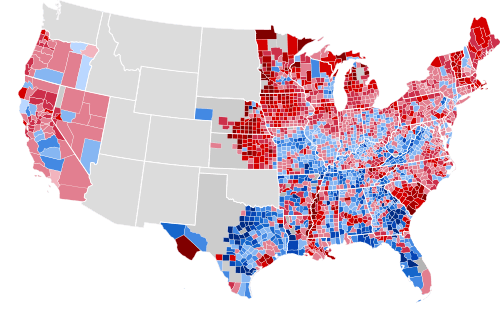
Results by county, shaded according to winning candidate's percentage of the vote
Cartographic gallery
-

Map of presidential election results by county.
-

Map of Republican presidential election results by county.
-
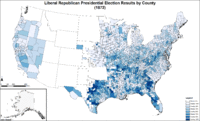
Map of Liberal Republican/Democratic presidential election results by county.
-

Map of "other" presidential election results by county.
-
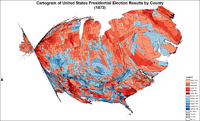
Cartogram of presidential election results by county.
-

Cartogram of Republican presidential election results by county.
-

Cartogram of Liberal Republican/Democratic presidential election results by county.
-

Cartogram of "other" presidential election results by county.
Results by state
Source: Data from Walter Dean Burnham, Presidential ballots, 1836–1892 (Johns Hopkins University Press, 1955) pp 247–57.[10]
| States won by Grant/Wilson |
| States won by Greeley/Brown |
| Ulysses S. Grant Republican |
Horace Greeley Democratic/Liberal Republican |
Charles O'Conor Straight-Out Democrat |
Margin | State Total | ||||||||||
|---|---|---|---|---|---|---|---|---|---|---|---|---|---|---|
| State | electoral votes |
# | % | electoral votes |
# | % | electoral votes |
# | % | electoral votes |
# | % | # | |
| Alabama | 10 | 90,272 | 53.19 | 10 | 79,444 | 46.81 | - | - | - | - | 10,828 | 6.38 | 169,716 | AL |
| Arkansas | 6 | 41,373 | 52.17 | 0 | 37,927 | 47.83 | - | - | - | - | 3,446 | 4.35 | 79,300 | AR |
| California | 6 | 54,007 | 56.38 | 6 | 40,717 | 42.51 | - | 1,061 | 1.11 | - | 13,290 | 13.87 | 95,785 | CA |
| Connecticut | 6 | 50,314 | 52.41 | 6 | 45,695 | 47.59 | - | - | - | - | 4,619 | 4.81 | 96,009 | CT |
| Delaware | 3 | 11,129 | 51.00 | 3 | 10,205 | 46.76 | - | 488 | 2.24 | - | 924 | 4.23 | 21,822 | DE |
| Florida | 4 | 17,763 | 53.52 | 4 | 15,427 | 46.48 | - | - | - | - | 2,336 | 7.04 | 33,190 | FL |
| Georgia | 11 | 62,550 | 45.03 | - | 76,356 | 54.97 | 11 | - | - | - | -13,806 | -9.94 | 138,906 | GA |
| Illinois | 21 | 241,936 | 56.27 | 21 | 184,884 | 43.00 | - | 3,151 | 0.73 | - | 57,052 | 13.27 | 429,971 | IL |
| Indiana | 15 | 186,147 | 53.00 | 15 | 163,632 | 46.59 | - | 1,417 | 0.40 | - | 22,515 | 6.41 | 351,196 | IN |
| Iowa | 11 | 131,566 | 60.81 | 11 | 81,636 | 37.73 | - | 2,221 | 1.03 | - | 49,930 | 23.08 | 216,365 | IA |
| Kansas | 5 | 66,805 | 66.46 | 5 | 32,970 | 32.80 | - | 156 | 0.16 | - | 33,835 | 33.66 | 100,512 | KS |
| Kentucky | 12 | 88,766 | 46.44 | - | 99,995 | 52.32 | 12 | 2,374 | 1.24 | - | -11,229 | -5.87 | 191,135 | KY |
| Louisiana | 8 | 71,663 | 55.69 | 0 | 57,029 | 44.31 | - | - | - | - | 14,634 | 11.37 | 128,692 | LA |
| Maine | 7 | 61,426 | 67.86 | 7 | 29,097 | 32.14 | - | - | - | - | 32,329 | 35.71 | 90,523 | ME |
| Maryland | 8 | 66,760 | 49.66 | - | 67,687 | 50.34 | 8 | - | - | - | -927 | -0.69 | 134,447 | MD |
| Massachusetts | 13 | 133,455 | 69.20 | 13 | 59,195 | 30.69 | - | - | - | - | 74,260 | 38.50 | 192,864 | MA |
| Michigan | 11 | 138,758 | 62.66 | 11 | 78,551 | 35.47 | - | 2,875 | 1.30 | - | 60,207 | 27.19 | 221,455 | MI |
| Minnesota | 5 | 55,708 | 61.27 | 5 | 35,211 | 38.73 | - | - | - | - | 20,497 | 22.54 | 90,919 | MN |
| Mississippi | 8 | 82,175 | 63.48 | 8 | 47,282 | 36.52 | - | - | - | - | 34,893 | 26.95 | 129,457 | MS |
| Missouri | 15 | 119,196 | 43.65 | - | 151,434 | 55.46 | 15 | 2,429 | 0.89 | - | -32,238 | -11.81 | 273,059 | MO |
| Nebraska | 3 | 18,329 | 70.68 | 3 | 7,603 | 29.32 | - | - | - | - | 10,726 | 41.36 | 25,932 | NE |
| Nevada | 3 | 8,413 | 57.43 | 3 | 6,236 | 42.57 | - | - | - | - | 2,177 | 14.86 | 14,649 | NV |
| New Hampshire | 5 | 37,168 | 53.94 | 5 | 31,425 | 45.61 | - | - | - | - | 5,743 | 8.33 | 68,906 | NH |
| New Jersey | 9 | 91,656 | 54.52 | 9 | 76,456 | 45.48 | - | - | - | - | 15,200 | 9.04 | 168,112 | NJ |
| New York | 35 | 440,738 | 53.23 | 35 | 387,282 | 46.77 | - | - | - | - | 53,456 | 6.46 | 828,020 | NY |
| North Carolina | 10 | 94,772 | 57.38 | 10 | 70,130 | 42.46 | - | 261 | 0.16 | - | 24,642 | 14.92 | 165,163 | NC |
| Ohio | 22 | 281,852 | 53.24 | 22 | 244,321 | 46.15 | - | 1,163 | 0.22 | - | 37,531 | 7.09 | 529,436 | OH |
| Oregon | 3 | 11,818 | 58.66 | 3 | 7,742 | 38.43 | - | 587 | 2.91 | - | 4,076 | 20.23 | 20,147 | OR |
| Pennsylvania | 29 | 349,589 | 62.07 | 29 | 212,041 | 37.65 | - | - | - | - | 137,548 | 24.42 | 563,262 | PA |
| Rhode Island | 4 | 13,665 | 71.94 | 4 | 5,329 | 28.06 | - | - | - | - | 8,336 | 43.89 | 18,994 | RI |
| South Carolina | 7 | 72,290 | 75.73 | 7 | 22,699 | 23.78 | - | 204 | 0.21 | - | 49,591 | 51.95 | 95,452 | SC |
| Tennessee | 12 | 85,655 | 47.84 | - | 93,391 | 52.16 | 12 | - | - | - | -7,736 | -4.32 | 179,046 | TN |
| Texas | 8 | 47,468 | 40.71 | - | 66,546 | 57.07 | 8 | 2,580 | 2.21 | - | -19,078 | -16.36 | 116,594 | TX |
| Vermont | 5 | 41,480 | 78.29 | 5 | 10,926 | 20.62 | - | 553 | 1.04 | - | 30,554 | 57.67 | 52,980 | VT |
| Virginia | 11 | 93,463 | 50.47 | 11 | 91,647 | 49.49 | - | 85 | 0.05 | - | 1,816 | 0.98 | 185,195 | VA |
| West Virginia | 5 | 32,320 | 51.74 | 5 | 29,532 | 47.28 | - | 615 | 0.98 | - | 2,788 | 4.46 | 62,467 | WV |
| Wisconsin | 10 | 104,994 | 54.60 | 10 | 86,477 | 44.97 | - | 834 | 0.43 | - | 18,517 | 9.16 | 192,305 | WI |
| TOTALS: | 366 | 3,597,439 | 55.58 | 286 | 2,833,710 | 43.78 | 66 | 23,054 | 0.36 | - | 763,729 | 11.80 | 6,471,983 | US |
Close states
Red font color denotes states won by Republican Ulysses S. Grant; blue denotes those won by Democrat/Liberal Republican Horace Greeley.
States where the margin of victory was under 5% (51 electoral votes)
- Maryland 0.69%
- Virginia 0.98%
- Delaware 4.23%
- Tennessee 4.32%
- Arkansas 4.35%
- West Virginia 4.46%
- Connecticut 4.81%
Margin of victory between 5% and 10% (133 electoral votes):
- Kentucky 5.87%
- Alabama 6.38%
- Indiana 6.41%
- New York 6.46%
- Florida 7.04%
- Ohio 7.09%
- New Hampshire 8.33%
- New Jersey 9.04%
- Wisconsin 9.16%
- Georgia 9.94%
| Vice Presidential candidate | Party | State | Electoral vote |
|---|---|---|---|
| Henry Wilson | Republican | Massachusetts | 286 |
| Benjamin Gratz Brown | National Union Party | Missouri | 47 |
| Alfred H. Colquitt | Democratic | Georgia | 5 |
| George Washington Julian | Liberal Republican | Indiana | 5 |
| Thomas E. Bramlette | Democratic | Kentucky | 3 |
| John M. Palmer | Democratic | Illinois | 3 |
| Nathaniel P. Banks | Liberal Republican | Massachusetts | 1 |
| William S. Groesbeck | Democratic/Liberal Republican | Ohio | 1 |
| Willis Benson Machen | Democratic | Kentucky | 1 |
| John Quincy Adams II | Bourbon Democratic | Massachusetts | 0 |
| John Russell | Prohibition | Michigan | 0 |
| Total | 352 | ||
| Needed to win | 177 | ||
Source: "Electoral College Box Scores 1789–1996". National Archives and Records Administration. Retrieved July 31, 2005.
Breakdown by ticket
| Presidential candidate | Running mate | Electoral vote(a) |
|---|---|---|
| Ulysses S. Grant | Henry Wilson | 286 |
| Thomas Andrews Hendricks | Benjamin Gratz Brown | 41 .. 42 |
| Benjamin Gratz Brown | Alfred Holt Colquitt | 5 |
| Benjamin Gratz Brown | George Washington Julian | 4 .. 5 |
| Benjamin Gratz Brown | Thomas E. Bramlette | 3 |
| Horace Greeley | Benjamin Gratz Brown | 3 (b) |
| Benjamin Gratz Brown | John McAuley Palmer | 2 .. 3 |
| Charles J. Jenkins | Benjamin Gratz Brown | 2 |
| Benjamin Gratz Brown | Nathaniel Prentiss Banks | 1 |
| Benjamin Gratz Brown | Willis Benson Machen | 1 |
| Benjamin Gratz Brown | William Slocum Groesbeck | 0 .. 1 |
| David Davis | Benjamin Gratz Brown | 0 .. 1 |
| David Davis | William Slocum Groesbeck | 0 .. 1 |
| David Davis | George Washington Julian | 0 .. 1 |
| David Davis | John McAuley Palmer | 0 .. 1 |
| Thomas Andrews Hendricks | William Slocum Groesbeck | 0 .. 1 |
| Thomas Andrews Hendricks | George Washington Julian | 0 .. 1 |
| Thomas Andrews Hendricks | John McAuley Palmer | 0 .. 1 |
(a) The used sources had insufficient data to determine the pairings of 4 electoral votes in Missouri; therefore, the possible tickets are listed with the minimum and maximum possible number of electoral votes each.
(b) Greeley was disqualified, having previously died and thus become ineligible for the Presidency, but the Brown vice-presidential votes were counted.
See also
- American election campaigns in the 19th century
- History of the United States (1865–1918)
- Third Party System
- Reconstruction era of the United States
- Second inauguration of Ulysses S. Grant
References
- ↑ "Voter Turnout in Presidential Elections". The American Presidency Project. UC Santa Barbara.
- ↑ Official Proceedings of the National Democratic Convention, Held at Baltimore, July 9, 1872. Boston: Rockwell & Churchill, Printers. 1872.
- ↑ Paul F. Boller, Jr. (2004). Presidential Campaigns: from George Washington to George W. Bush. Oxford University Press. pp. 128–129. ISBN 0-19-516716-3.
- ↑ Dunning 198
- ↑ Dunning 197
- ↑ Guide to U.S. Elections. Volume 1 (Fifth ed.). CQ Press. November 17, 2005. ISBN 1-56802-981-0.
- ↑ "Our Campaigns – Candidate – Victoria C. Woodhull".
- ↑ United States Congress (1873). Senate Journal. 42nd Congress, 3rd Session, February 12. pp. 334–346. Retrieved March 23, 2006.
- ↑ David A. McKnight (1878). The Electoral System of the United States: A Critical and Historical Exposition of Its Fundamental Principles in the Constitution and the Acts and Proceedings of Congress Enforcing It. Wm. S. Hein Publishing. p. 313. ISBN 978-0-8377-2446-1.
- ↑ "1872 Presidential General Election Data – National". Retrieved May 7, 2013.
Further reading
- American Annual Cyclopedia...for 1872 (1873), comprehensive collection of facts online edition
- Blaine, James G. (1885). Twenty Years of Congress. vol. 2. pp. 520–31. online edition
- Donald, David Herbert. Charles Sumner and the Rights of Man (1970).
- Downey, Matthew T. "Horace Greeley and the Politicians: The Liberal Republican Convention in 1872," The Journal of American History, Vol. 53, No. 4. (Mar. 1967), pp. 727–750. in JSTOR
- Dunning, William Archibald (1905). Reconstruction: Political & Economic, 1865–1877. ch. 12. online edition
- Lunde, Erik S. "The Ambiguity of the National Idea: the Presidential Campaign of 1872" Canadian Review of Studies in Nationalism 1978 5(1): 1-23. ISSN 0317-7904.
- McPherson, James M. "Grant or Greeley? The Abolitionist Dilemma in the Election of 1872" American Historical Review 1965 71(1): 43–61. in JSTOR
- Porter, Kirk H.; Johnson, Donald Bruce, eds. (1956). National Party Platforms, 1840–1956.
- Prymak, Andrew. "The 1868 and 1872 Elections," in Edward O. Frantz, ed. A Companion to the Reconstruction Presidents 1865–1881 (Wiley Blackwell Companions to American History) (2014) pp. 235–56 online
- Republican Campaign Clubs, Horace Greeley Unmasked. New York: Republican Campaign Clubs, 1872. —Campaign pamphlet.
- Rhodes, James Ford. History of the United States from the Compromise of 1850 to the McKinley-Bryan Campaign of 1896. Volume: 7 ch 39–40. (1920)
- Ross, Earle Dudley. The Liberal Republican Movement (1910) full text online
- Slap, Andrew L. The Doom of Reconstruction: The Liberal Republicans in the Civil War Era (2006) online edition
- Summers, Mark Wahlgren. The Press Gang: Newspapers and Politics, 1865–1878 (1994) ch 15
- Summers, Mark Wahlgren. The Era of Good Stealings (1993), covers corruption 1868–1877
- Van Deusen, Glyndon G. Horace Greeley, Nineteenth-Century Crusader (1953) online edition
External links
- Presidential Election of 1872: A Resource Guide from the Library of Congress
- 1872 popular vote by counties
- How close was the 1872 election? — Michael Sheppard, Massachusetts Institute of Technology
- Election of 1872 in Counting the Votes
